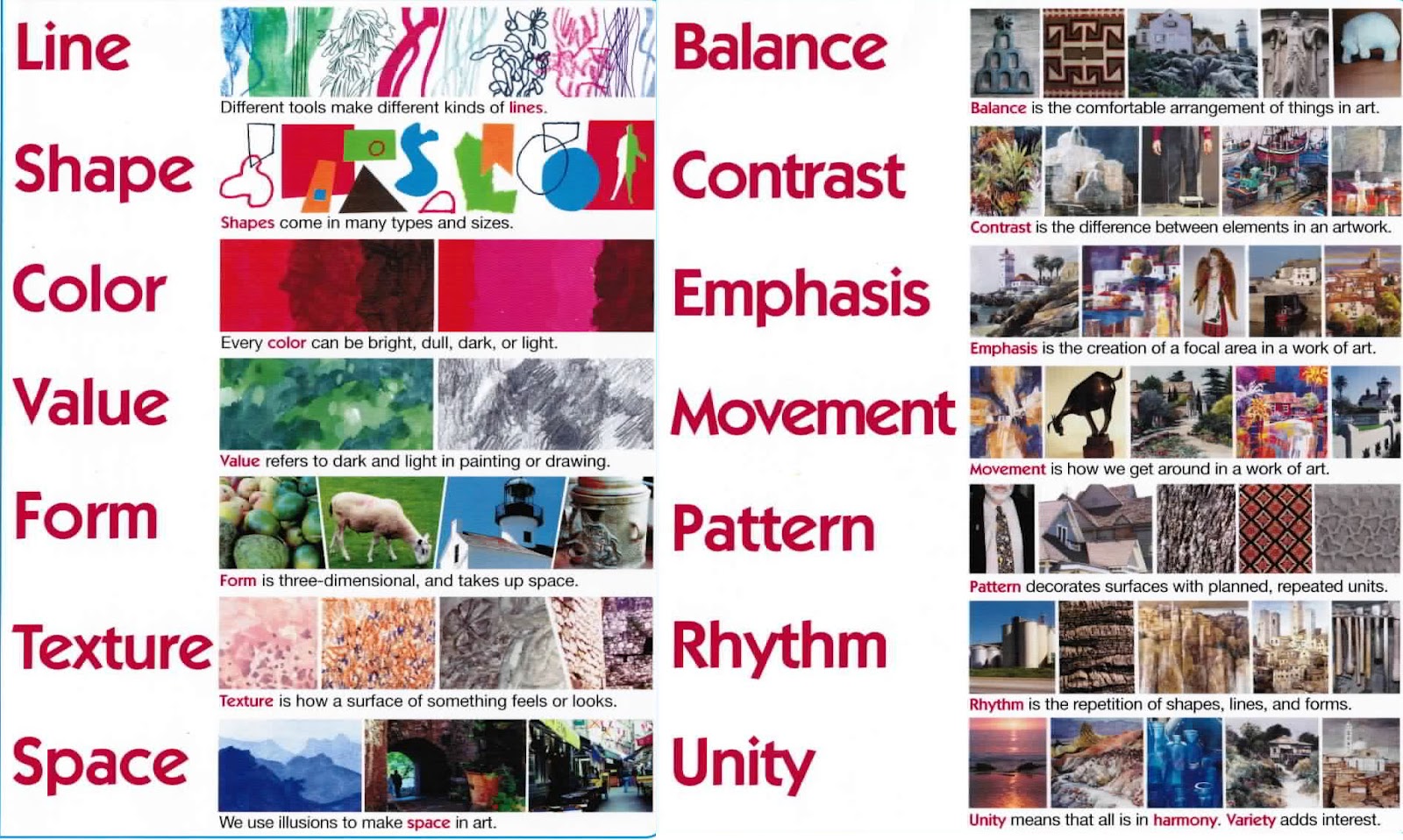

The great variety of line types make them an especially useful tool in artworks. Lines may be continuous or broken, and can be any width or texture. Line is an element of art defined as the path of a point moving through space.
ELEMENTS OF ART FULL

Value is a color’s lightness or darkness, which is altered when black or white is added. The human eye is capable of seeing millions of colors, making it one of the most diverse and powerful elements of art.Įach color has three properties-hue, value, and intensity.
ELEMENTS OF ART DOWNLOAD
Download the Free Elements and Principles Printable PackĬolor is the visual property of the pigment of an object that is detected by the eye and produced as a result of the way the object reflects or emits light. As an Amazon Associate I earn from qualifying purchases. Please note, this post includes Amazon affiliate links. Knowing the tools not only improves students’ studio art skills and gives them deeper appreciation when viewing artworks, it helps make them better, more informed citizens and prepares them for a visually complex and culturally interconnected modern world in need of creative problem solvers.īelow you’ll find an explanation of each of the elements and principles of art, including artwork examples and links to helpful materials for teaching the individual concepts. The elements and principles of design are an artist’s toolbox. Art inspires higher level thinking, focus, a growth mindset, visual literacy, curiosity, respect, and connection. The elements and principles of art are a lens through which to view and understand art, but they are not what makes art education vital.

I once said that I hate the elements and principles of art, but that’s not quite accurate.


 0 kommentar(er)
0 kommentar(er)
